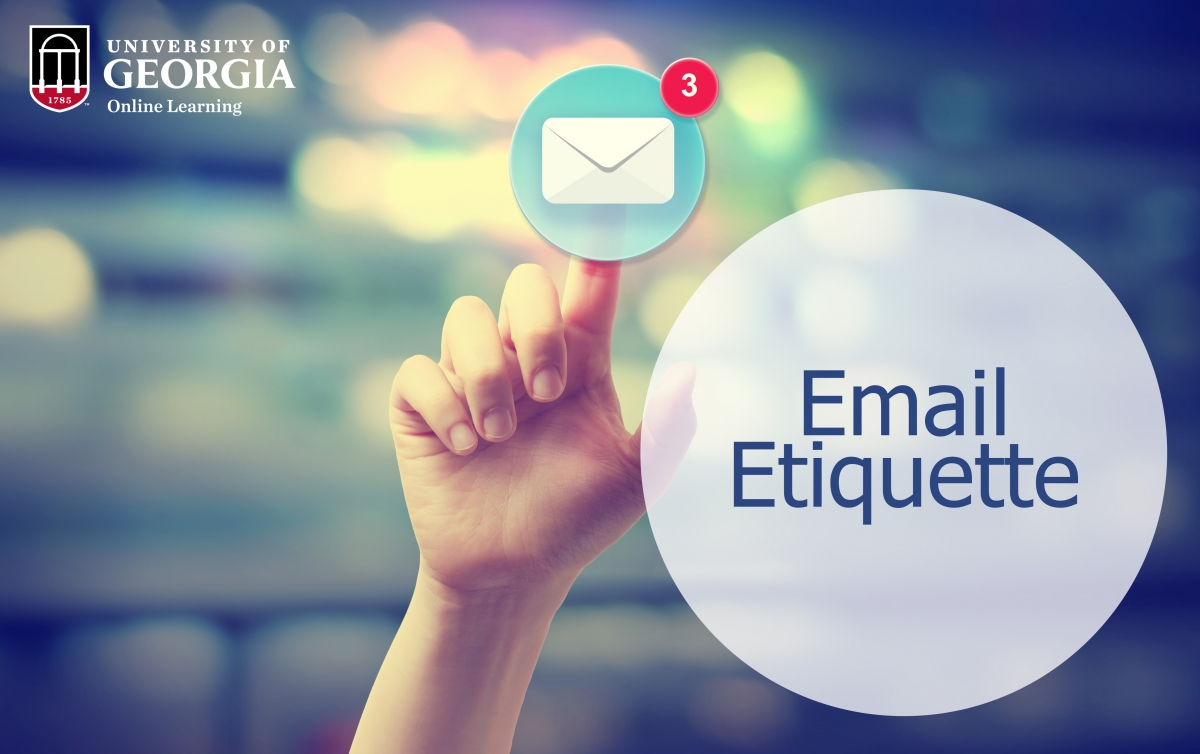Email Etiquette
Email Etiquette
While sending an email may seem like a simple task, mistakes are often easy to overlook. It is common to not put much thought into an email before pressing the send button, particularly after looking at a piled up inbox. Despite being perhaps one of the most effective forms of communication, emails can have major downsides if not used properly. Look over these tips to avoid sabotaging your personal or professional reputation with a simple email error.
1) Briefly introduce yourself and keep a clear, simple tone and message.
Never assume someone remembers meeting you, especially in the business world. Always introduce yourself at the beginning of an email and remind the recipient how you know them or met them and what you would like to address. There is no need for a formal biography. Make sure to use formal salutations, such as “hi” or “hello,” rather than “yo” or “hi folks.” Never shorten a name within an email unless that person has specifically asked you to do so. Also, because people get many emails each day, it is easy to have one mistaken for spam, so keep to the point and be descriptive. Do not include too many exclamation points or all text in either caps or lowercase. It is perfectly acceptable to change the subject of an email thread as the content changes.
2) Keep it clean.
When composing a professional email, make sure to use a professional email address. A professional or company email address looks better than your middle school email address, and will encourage others to take you more seriously. Consider using a signature block to add a little publicity about yourself, but be sure not to overdo it. Keep the same font type and style throughout the email, including in the signature block. Do not send an email with multiple addresses listed. All in all, it is important and professional to know how to keep a clean email. Always proofread!
3) Send emails when they are necessary.
Sometimes, emails are not the answer. If a topic has multiple pieces that need to be explained or negotiated, calling that person or setting up a time to meet in person may be a better option. Emails are valuable when several people need to know about something or when the topic has to do with planning in advance. On the other hand, do not overuse the high priority option if you want people to take you seriously. Keep in mind that long emails are a thing of the past and that the best emails are concise and to the point. The reader should know the purpose of an email within the first two sentences. Also, make sure to provide a warning to the reader when large attachments will be included in an email. Otherwise, you may bother the reader or have your email bounce back. Additionally, there is no rule that you must reply to an email immediately after receiving it. However, responding in a timely fashion, as in the first one to two days is a good idea.
4) Do not let your emotions clog your writing.
When an email looks like it was written in anger, grief, or too much excitement, it is hard to take it seriously. It looks unprofessional to inject too much emotion into an email, and it is often forgotten that an email lasts forever. Too many exclamation points look childish, as do emojis or slang words. Always watch your use of jargon.
5) Respect and maintain privacy
Emails may appear private as you have to log on to your account to see them and you can specifically choose who to send them too. However, it is important to only discuss public matters in an email. You never know who will see that email, especially if you accidentally send it to the wrong person or the content is misinterpreted. Email messages can also be forwarded and shared with others unless the message has been encrypted. Information that entails personal details should be handled with high caution Sometimes, consequences related to email content can be detrimental professionally, personally, or even legally. Finally, only send or copy emails to others on a need to know basis. Take the time to send the right message to the right people, and use the Bcc feature to maintain the privacy of the recipients
